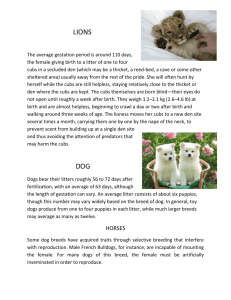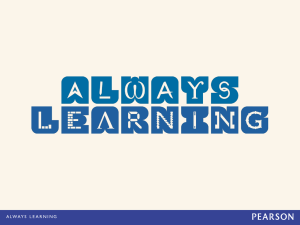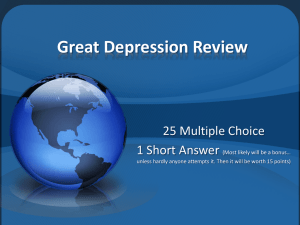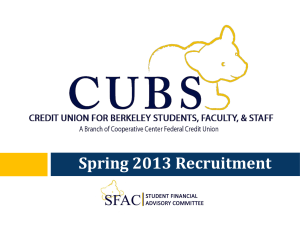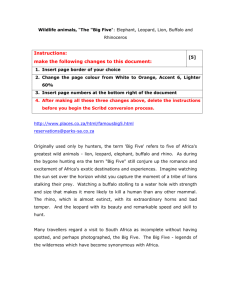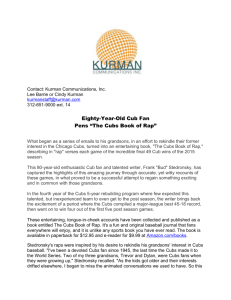Asian Underground Banking (CUBS)
advertisement
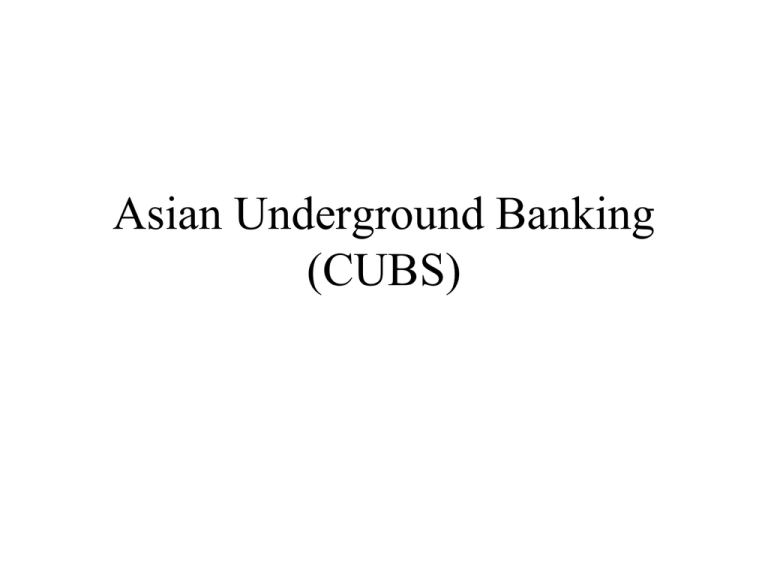
Asian Underground Banking (CUBS) What is CUBS? • CUBS is the Chinese Underground Banking System. • It is an Informal Value Transform System (IVTS) in east Asia that transmits large sums of money with fewer paper documents and banking procedures. • Asian IVTS are also called Chop Shops. How does it work? • • • • • • There are no physical transfer of funds. It is mostly a bookkeeping entry. The sending company takes a credit in its books and the receiving company records a debit. “Trust” is very crucial because the Chop Shops are based on familial lines. If trust is broken it leads to economical suicide and ostracization from community. Chop Shops make money by fees and capitalize on official and unofficial exchange rates. Where does it operate? • There are branches in Hong Kong, Malaysia, Singapore, Thailand, and the US.(East Asia) • Flourish where there are inefficiencies in official banking. • Exist in countries with or without laws controlling the exportation of funds. • Exist in countries with convertible or nonconvertible currency. Who makes use of it? • Legal abiding citizens mostly use CUBS to send their remittances over seas. • However, there are some secret brotherhoods, called “triads”. • They have an oath and disciplinary code. • They are affiliated with Chinese organized crime that uses CUBS. Legitimate Customers Who: The Asian Diaspora has a mistrust of central government and central banking systems because of foreign occupation and political turmoil. They then rely more on ethnic banking systems. Why: • Formal financial sector may be too unstable or unreliable • Tax evasion • Avoidance of reporting requirements • Anonymity • Murkier paper trail • Efficiency • Inexpensive • Convenient Heroin trafficking example NYC – heroin profits HONG KONG Bulk cash smuggling BURMA IVTS CHIANG MAI IVTS Wire transfer PARAGUAY Wire transfer BANGKOK CUBS operator also made money because of difference between official and unofficial Burmese kyat/Thai baht exchange rate Source: IP 555 Money Laundering, Terrorism Financing, and Policy Responses; Prof. Moyara Ruehsen


